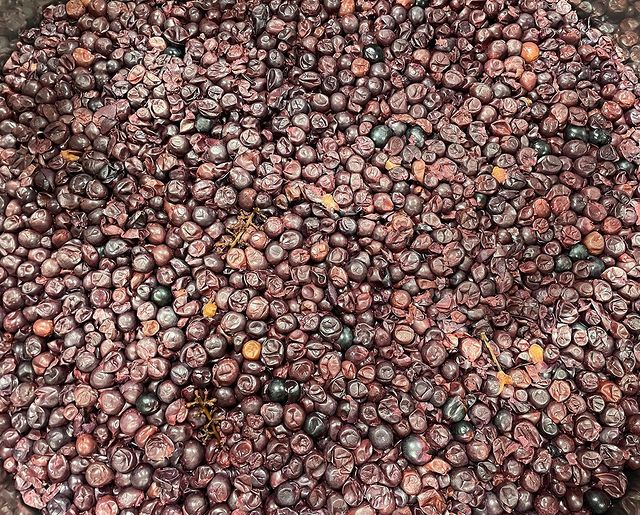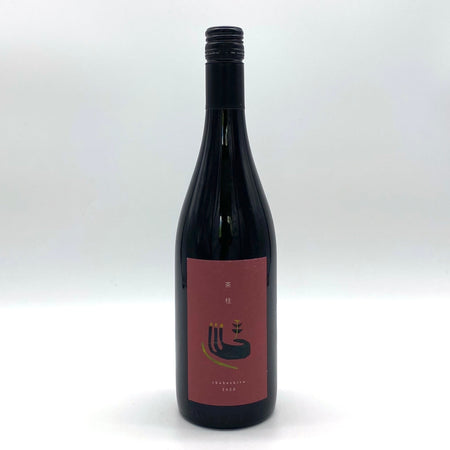Domaine Murayama
Tomi, Nagano
People
Mr Koki Murayama was born in the countryside in the south of Kyoto and grew up surrounded by nature. He was good at drawing, loved art and making things, and knew he would not become an office worker, as many people choose to do.
He moved to Osaka when he was in junior high school and enrolled in a foreign language college, but found it boring and left after a year. As he wanted to start his own business, he decided to become a hairdresser and studied for three years at a correspondence course while working in a beauty salon, and also obtained the licence. However, when it came to setting up his own beauty salon, he found it impossible to have a family because of the long hours of restraint from morning to night.
Therefore, he decided to change his career to become a furniture craftsman, interning at a design office in Osaka during the day while working part-time at a wine bar in Namba, Osaka, at night. This was his first real encounter with wine.

He has always been a wine drinker and tasted a variety of wines with customers at the bar. Among them, he was impressed by the taste of COCO FARM & WINERY's Noumin Rosso and Takeda Winery's Suns Soufre Blanc, and thought that it might be worth making his own wine in Japan. He had the option of becoming a sommelier, but when he thought about his interest in craftsmanship and his future plans for raising children and retirement, he decided that he wanted to live in the countryside and make his own wine.

In an attempt to find land for vineyards, he visited various places in Japan and decided to choose either Tomi in Nagano or Hokkaido, where good grapes are easy to grow. The reasons were that the environment was suitable for viticulture, which will be mentioned later, and that it was convenient and accessible to Tokyo, that interesting producers of the same age were gathering, and that Nagano was offering a seven-year subsidy system to support producers. Thus began Koki's winemaking in Tomi.
Vineyard
Tomi in Nagano is suitable for growing high quality grapes. The reasons for this are that there is very little rainfall in Japan, most of the vineyards are on south-facing slopes, the area is surrounded by mountains and is not easily affected by typhoons, and the difference in temperature between morning and evening allows the grapes to rest during the night and ripen properly.

As the altitude ranges from 500 to 900 metres, it is important to plant grapes that are suited to the altitude, but the ability to try different grape varieties is an interesting aspect of the Tomi region for winemakers. The high altitude is also good for preparing for further warming in the future.

His vineyards are about 600 metres above sea level, on a mixture of volcanic soil and heavy clay, 1.2 hectares in total. He is growing the following varieties. Chardonnay, Sauvignon Blanc, Pinot Gris, Riesling, Traminer, Kerner, Cabernet Sauvignon, Merlot, Cabernet Franc, Pinot Noir and Syrah. Vine training varies from vineyard to vineyard, and small vineyards are designed to be worked entirely by hand, with no machinery at all.

In addition to grapes for wine, Koki also grows vegetables, rice, beans for soy sauce, wheat, apples and tomatoes for ketchup. For all of these fields and crops, he uses as little pesticides as possible, while checking the yield of the crops.
His main concern is to keep the vineyards healthy. He removes as much grass as possible by hand, leaving only a diversity of good leaves. This attracts all kinds of insects and microorganisms and creates biodiversity in the vineyards. This is because if only the same leaves are left, only the same insects and microorganisms will be attracted. Therefore, he considers whether each leaf is needed or not, and if so, which part of the leaf to cut. He says that the condition of the field changes depending on the accumulation of these factors.
He also sees the vineyards of his fellow growers close to him, talks with them about all sorts of things, gets inspired and always makes use of this in his vineyards.
Winemaking

In winemaking, Koki emphasises the blending of feeling and logic. He believes that it is boring to follow a logical approach as in the textbooks, but it is also different to make wines only with the senses.
The feeling is the way the grapes are crushed, how long they are left in the tank after crushing and when they are pressed, all of which are done with the aim of producing the desired wine, but judged at the time based on the specific gravity, aroma and taste of the grapes at the time of crushing. It is a balance of feeling that is required in this process.
For example, if you make wine normally with Kyoho (one of the famous table grapes in Japan), it tends to be sweet and uninteresting. How do you remove that sweetness? How long do you dry it out? Do you mask it during fermentation? If the acidity is low, do you add Chardonnay from the previous year? Or do you release the wine earlier and make it light-bodied?
The logical approach means data and analysis. Trying out different ways of doing things, such as those described above, and reflecting on the results and applying them to the next year.

Ultimately, it comes down to a game of taste. Mr Murayama says he wants to make wines that 'leave a lasting impression'. A memorable wine is one that has an easy-to-understand taste that leaves a lasting impression, yet is complex with various elements that can be felt, is familiar to the body, enhances the dashi soup stock dishes that Japanese people usually eat, and is ‘the kind of wine that is gone before you realise it’.
He is currently renting the winery, cave hatano's facilities, also in Tomi, to make his own wines. In the future, as well as improving quality, he dreams of increasing production and, in about five years' time, creating his own winery that is interesting as a place to visit. He also has a strong interest in how Japanese wine and his wines are positioned abroad.
Find out their wines
121cm 2022
€30,00
chabashira 2023
€46,00







